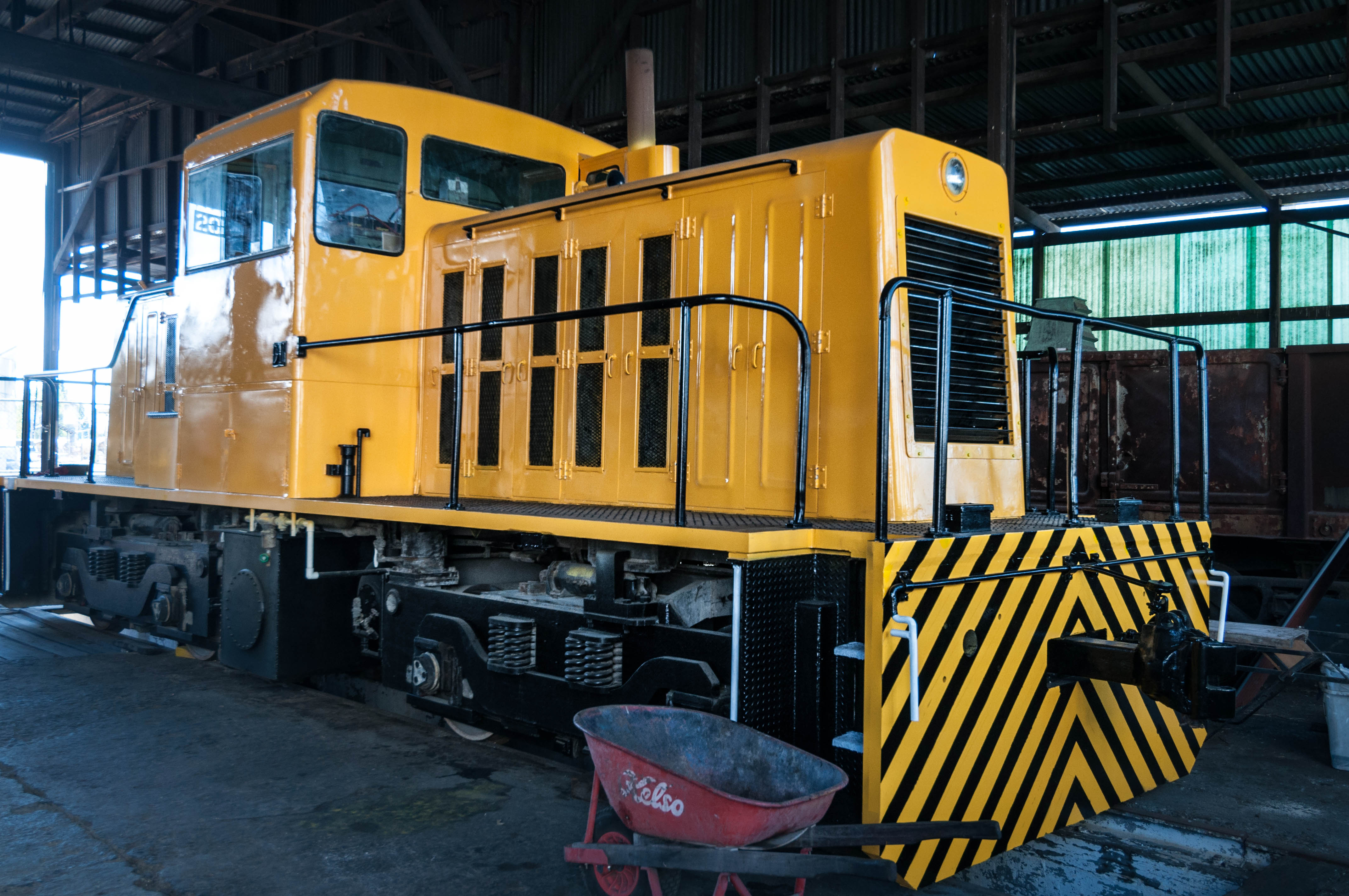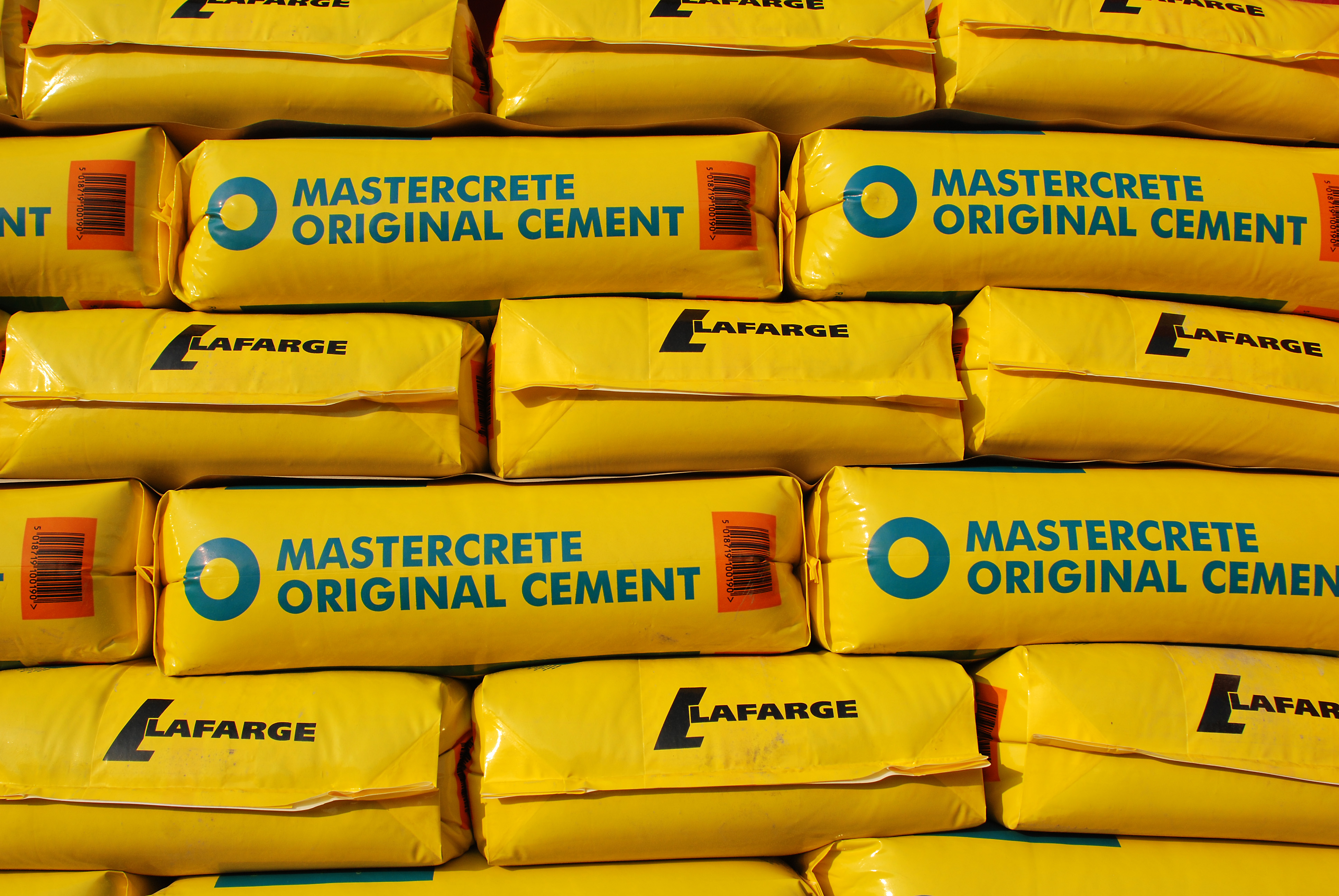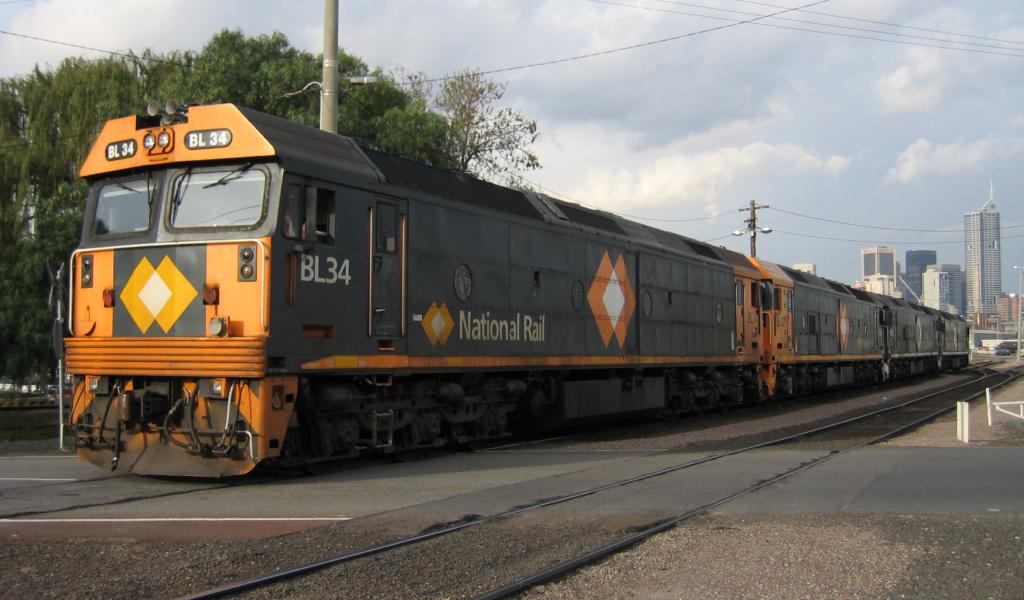|
BHP Newcastle 37 Class
The BHP Newcastle 37 class were a class of diesel locomotives built by A Goninan & Co, Broadmeadow for the BHP's, Newcastle Steelworks between 1960 and 1983. History In 1960, the first five locomotives numbered 37 to 41 were delivered by A Goninan & Co to a design suitable for use on both the narrow gauge ingot system and the system. These locos were an Australian version of the standard General Electric 80 Ton switcher. Originally two of these five locomotives were fitted with narrow gauge bogies, the other three being fitted with standard gauge bogies. These locos were fitted with 2 Cummins NHS-B1-6 supercharged diesel engines. Whilst the first five were under construction an order for a further six locos to the same specifications was placed, these locos were given numbers 42 to 47. In 1961, a further 6 locos were ordered from Goninans, these 6 however were powered by two Rolls-Royce C6TFL turbocharged diesel engines. These 6 locos were numbered 48 to 53. The first 15 ... [...More Info...] [...Related Items...] OR: [Wikipedia] [Google] [Baidu] |
Richmond Vale Railway Museum
The Richmond Vale Railway Museum operates a railway and museum located at the heritage-listed Richmond Main Colliery south of Kurri Kurri, New South Wales. The museum is a volunteer non-profit organization, formed in 1979 with the aim of preserving the Richmond Vale railway line and the mining heritage of J & A Brown and the Hunter Valley. History After the closure of Richmond Main Power Station in 1976, City of Cessnock, Cessnock City Council acquired the abandoned Richmond Main Colliery together with surrounding the buildings from Coal & Allied. In 1979 the newly formed Richmond Vale Preservation Co-operative Society assumed the responsibility for the railway, leaving the development of Richmond Main Park and Mining Museum to be done independently. Operations The museum is opened on the first three Sundays of each month and every Sunday during school holidays, and the site consists of the following features: *Richmond Vale Office *Museum Display *Mining Equipment *Railway ... [...More Info...] [...Related Items...] OR: [Wikipedia] [Google] [Baidu] |
Railway Air Brake
A railway air brake is a railway brake power braking system with compressed air as the operating medium. Modern trains rely upon a fail-safe air brake system that is based upon a design patented by George Westinghouse on April 13, 1869. The Westinghouse Air Brake Company was subsequently organized to manufacture and sell Westinghouse's invention. In various forms, it has been nearly universally adopted. The Westinghouse system uses air pressure to charge air reservoirs (tanks) on each car. Full air pressure causes each car to release the brakes. A subsequent reduction or loss of air pressure causes each car to apply its brakes, using the compressed air stored in its reservoirs. Overview Straight air brake In the air brake's simplest form, called the ''straight air system'', compressed air pushes on a piston in a cylinder. The piston is connected through mechanical linkage to brake shoes that can rub on the train wheels, using the resulting friction to slow the train. Th ... [...More Info...] [...Related Items...] OR: [Wikipedia] [Google] [Baidu] |
Blue Circle
Blue Circle Industries was a British public company manufacturing cement. It was founded in 1900 as the Associated Portland Cement Manufacturers Ltd through the fusion of 24 cement works, mostly around on the Thames and Medway estuaries, together having around a 70% market share of the British cement market. In 1911, the British Portland Cement Manufacturers Ltd was formed by the addition of a further 35 companies, creating a company with an initial 80% of the British cement market. Subsequently, the company expanded overseas, predominantly into commonwealth countries and South and Central America. The energy crisis of the 1970 caused the contraction of the company, and the sale of its overseas plants. In 1978, the company's name was changed to ''Blue Circle''. In 2001 the company was bought by Lafarge. History The company was founded in 1900 as ''Associated Portland Cement Manufacturers Ltd'' by the amalgamation of 24 cement companies, owning 35 cement plants, all but two o ... [...More Info...] [...Related Items...] OR: [Wikipedia] [Google] [Baidu] |
Cockle Creek Smelter
Cockle Creek Smelter was a zinc and lead smelter located at the northern end of Lake Macquarie near Boolaroo in Newcastle, New South Wales. The smelter was built in by the Sulphide Corporation in 1896 and the first attempts to refine zinc using the Ashcroft Process began in 1897 but that process was abandoned shortly after due to technical difficulties. The plant was subsequently adapted to smelt Lead using blast furnace technology. The smelter produced large quantities of Zinc, Lead and sulphuric acid during its life. The Cockle Creek Smelter was one of the Hunter regions first major industrial site and its operation contributed to the economic growth of New South Wales and Australia. Other materials were produced at the smelter to fill the need as required such as Cement, Superphosphate and compounds for explosive manufacture for the war effort in World War I and World War II. A rail connection was made from the plant to the Newcastle line on 16 July 1896.''The Sulphide Works ... [...More Info...] [...Related Items...] OR: [Wikipedia] [Google] [Baidu] |
Dorrigo Steam Railway & Museum
The Dorrigo Steam Railway & Museum in Dorrigo, New South Wales, Australia is a large, privately owned collection of railway vehicles and equipment from the railways of New South Wales, covering both Government and private railways. The collection dates from 1878 until 1985. Status The museum was opened very briefly in 1986, but has been described as "not yet open to the public" ever since. History The museum's origins stem from the formation of the Hunter Valley Steam Railway & Museum in 1973 which was formed following the closure of the Glenreagh to Dorrigo branch line the previous year with the aim of restoring the 69 kilometres as a tourist railway. Much of the rolling stock was stored at the former Rhondda Colliery, three kilometres from Cockle Creek while the line was repaired. It was renamed the Dorrigo Steam Railway & Museum in 1982. On 20 December 1984, the section from Glenreagh to Lowanna was reopened with 5069 hauling the first train. On 5 April 1986 the line w ... [...More Info...] [...Related Items...] OR: [Wikipedia] [Google] [Baidu] |
Port Kembla, New South Wales
Port Kembla is a suburb of Wollongong 8 km south of the CBD and part of the Illawarra region of New South Wales. The suburb comprises a seaport, industrial complex (one of the largest in Australia), a small harbour foreshore nature reserve, and a small commercial sector. It is situated on the tip of Red Point (Port Kembla), Red Point: its first European sighting was by Captain James Cook in 1770. The name "Kembla" is an Aboriginal Australians, Aboriginal word meaning "plenty [of] wild fowl". History Before Port Kembla was an industrial suburb of Wollongong, it was a town with a remarkably self-sufficient society, a growing commercial centre, and a vibrant civic life. Town subdivision began in 1908, and by 1921 there were 1622 residents. Economic expansion propelled further population growth. Port Kembla derives its name from its proximity to Mount Kembla. Industrial change A copper smelter and refinery, the Electrolytic Refinery and Smelting Company of Australia, began pro ... [...More Info...] [...Related Items...] OR: [Wikipedia] [Google] [Baidu] |
Railway Digest
''Railway Digest'' is a monthly magazine, published in Sydney, covering contemporary railways of Australia. Overview The magazine's publisher is the Australian Railway Historical Society (ARHS), NSW Division. The first issue was published in March 1963 under the name ''New South Wales Digest'' and regular publication commenced with the May 1963 edition. It was renamed in January 1983. In January 1985 it changed paper size from SRA5 to A4. Originally an enthusiast magazine mainly focusing on reporting day-to-day workings of the New South Wales Government Railways and it successors, it was produced by volunteers using a hand-operated duplicator at the home of one of its members. In May 1993, a paid editor was appointed and the magazine's focus gradually shifted to reporting news from across Australia. It has evolved into a professional full-colour production directed at the wider community and commercially distributed to newsagents throughout Australia."Adapt or disappear - the ... [...More Info...] [...Related Items...] OR: [Wikipedia] [Google] [Baidu] |
National Rail Corporation
The National Rail Corporation was an Australian rail operator established by the Government of Australia, Federal, Government of New South Wales, New South Wales and Government of Victoria (Australia), Victorian governments in February 1992. In February 2002, National Rail was sold to a Patrick Corporation and Toll Holdings consortium and rebranded Pacific National. History The National Rail Corporation was established in February 1992 after the Government of Australia, Federal Government, and State Governments of Government of New South Wales, New South Wales and Government of Victoria (Australia), Victoria agreed to its establishment in July 1991. It took over the running of all interstate services from Australian National Railways Commission, Australian National, FreightCorp and Public Transport Corporation, V/Line. National Rail took over cross-border operations progressively from April 1993 over the interstate network between Brisbane, Sydney, Melbourne, Adelaide, Alice ... [...More Info...] [...Related Items...] OR: [Wikipedia] [Google] [Baidu] |
Supercharger
In an internal combustion engine, a supercharger compresses the intake gas, forcing more air into the engine in order to produce more power for a given displacement. The current categorisation is that a supercharger is a form of forced induction that is mechanically powered (usually by a belt from the engine's crankshaft), as opposed to a turbocharger, which is powered by the kinetic energy of the exhaust gasses. However, up until the mid-20th century, a turbocharger was called a "turbosupercharger" and was considered a type of supercharger. The first supercharged engine was built in 1878, with usage in aircraft engines beginning in the 1910s and usage in car engines beginning in the 1920s. In piston engines used by aircraft, supercharging was often used to compensate for the lower air density at high altitudes. Supercharging is less commonly used in the 21st century, as manufacturers have shifted to turbochargers to reduce fuel consumption and/or increase power outputs. Des ... [...More Info...] [...Related Items...] OR: [Wikipedia] [Google] [Baidu] |
Narrow Gauge Railway
A narrow-gauge railway (narrow-gauge railroad in the US) is a railway with a track gauge narrower than standard . Most narrow-gauge railways are between and . Since narrow-gauge railways are usually built with tighter curves, smaller structure gauges, and lighter rails, they can be less costly to build, equip, and operate than standard- or broad-gauge railways (particularly in mountainous or difficult terrain). Lower-cost narrow-gauge railways are often used in mountainous terrain, where engineering savings can be substantial. Lower-cost narrow-gauge railways are often built to serve industries as well as sparsely populated communities where the traffic potential would not justify the cost of a standard- or broad-gauge line. Narrow-gauge railways have specialised use in mines and other environments where a small structure gauge necessitates a small loading gauge. In some countries, narrow gauge is the standard; Japan, Indonesia, Taiwan, New Zealand, South Africa, and the Aust ... [...More Info...] [...Related Items...] OR: [Wikipedia] [Google] [Baidu] |
Goulburn Roundhouse Museum General Electric Bo-Bo L80T Diesel Locomotive D1
Goulburn ( ) is a regional city in the Southern Tablelands of the Australian state of New South Wales, approximately south-west of Sydney, and north-east of Canberra. It was proclaimed as Australia's first inland city through letters patent by Queen Victoria in 1863. Goulburn had a population of 23,835 at June 2018. Goulburn is the seat of Goulburn Mulwaree Council. Goulburn is a railhead on the Main Southern line, a service centre for the surrounding pastoral industry, and also stopover for those traveling on the Hume Highway. It has a central park and many historic buildings. It is also home to the monument the Big Merino, a sculpture that is the world's largest concrete-constructed sheep. History Goulburn was named by surveyor James Meehan after Henry Goulburn, Under-Secretary for War and the Colonies, and the name was ratified by Governor Lachlan Macquarie. The colonial government made land grants to free settlers such as Hamilton Hume in the Goulburn area from the ope ... [...More Info...] [...Related Items...] OR: [Wikipedia] [Google] [Baidu] |
Newcastle Steelworks
The Newcastle Steelworks was built by BHP in Newcastle, New South Wales. Construction commenced in January 1913, with operations commencing in March 1915. It was officially opened on 2 June 1915 by Governor-General of Australia, Governor-General Ronald Munro Ferguson. Newcastle was selected due to its proximity to the Hunter Valley coalfields with the iron ore shipped from Whyalla. Having become one of the largest employers in Australia with a workforce that peaked at 11,000 in 1981, it closed on 30 September 1999. Demolition commenced in 2000. In 2022 the Department of Planning & Environment called for expressions of interest to redevelop the site. The steelworks had a rail network. Initially operated by steam locomotives, BHP Newcastle 32 class, 32 and BHP Newcastle 37 class, 37 class diesel locomotives were later introduced.Steelworks Sign-Off ''Railway Digest'' October 1999 pages 22-24 References {{Coord, 32.895, S, 151.760, E, format=dms, display=title BHP Indust ... [...More Info...] [...Related Items...] OR: [Wikipedia] [Google] [Baidu] |





.jpg)